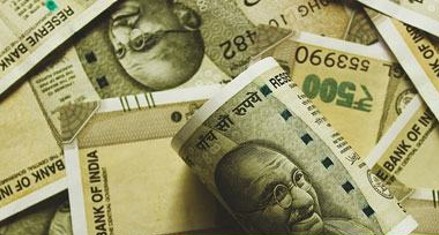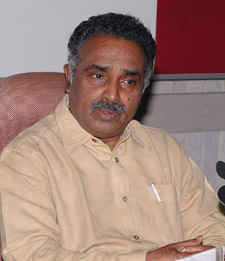
The most serious aspect of the Prevention of Money Laundering Act is the inclusion of offences which have nothing to do with the original motive — namely, to combat the laundering of drug money.

The Prevention of Money Laundering Act (PMLA), 2002 was enacted with a distinct objective. The humongous volume of black money generated through international drug trafficking posed a grave threat to the economy of many countries. There was widespread realization that the black money generated through the flourishing drug trade and integrated into the legitimate economy was likely to destabilize the world economy and endanger the integrity and sovereignty of nations.
The background to the law is important
The United Nations took serious note of this, and in 1988, held the United Nations Convention against Illicit Traffic in Narcotic Drugs and Psychotropic Substances. All countries were urged to take urgent steps to prevent the laundering of the proceeds of drug crimes and other connected activities. Subsequent to this, seven major industrial nations held a summit in Paris (July 1989) and established the Financial Action Task Force (FATF) to examine the problem of money laundering and recommend measures to tackle this menace. Thereafter, in 1990, the United Nations General Assembly adopted a resolution, namely, the Political Declaration and Global Programme of Action which called upon all member-countries to enact suitable pieces of legislation to effectively prevent the laundering of drug money.
In pursuance of this resolution of the UN General Assembly, the Government of India used the recommendations of the FATF to formulate a legislation to prevent drug money laundering. As drug trafficking is a trans-border operation, the UN held a special session on June 10, 1998 on the theme ‘Countering World Drug Problem Together’ and made another declaration on the urgent need to combat money laundering. Accordingly, the Indian Parliament enacted the Prevention of Money Laundering Act in 2002. But it was brought into force in 2005.
This narration of the history of this law is necessary in order to emphasize the original objective and the circumstances which lead to the enactment. As is clear from history, the main focus of the law is on combating the laundering of drug money. Accordingly, the Act of 2002 contained a few offences listed in the Indian Penal Code (IPC) and the Narcotic Drugs and Psychotropic Substances Act, 1985. The UN resolutions, and the FATF recommendations are all focused on the prevention of money from the laundering of drugs. However, the PMLA of India acquired a different character through amendments from time to time.
The law on money laundering revolves around the “crime proceeds” which are laundered. Not only the persons involved directly in the crime and the generation of the crime proceeds but also persons who have nothing to do with the crime but who have some involvement at a later stage in the laundering process are also guilty under this law.
But the most serious aspect of the PMLA is that it includes a large number of offences in the schedule which have nothing to do with the original purpose of this law — namely, combating the laundering of drug money. The UN resolution on the basis of which the law on laundering was enacted in India spoke only about the offence of the laundering of drug money. This was considered the most serious economic crime which had the potential to destabilize the world economy and endanger the sovereignty of nations, as highlighted above. The preamble to the PMLA endorses it. So, there was global consensus on the need to have a tough law to deal effectively with this crime. Thus, the raison d’etre of the PMLA is the crime of the laundering of a huge volume of black money generated from the international drug trade and the specter of destabilization of the world economy.
The PMLA’s enactment
Further, the PMLA was enacted by India’s Parliament under Article 253 which empowers it to make laws for implementing the international conventions. This Article indicates that a law Parliament makes to implement any decision of an international body will be confined to the subject matter of that decision. Item 13 in the Union list of the Seventh Schedule of the Constitution is specific on this point. Thus, the law on money laundering enacted under Article 253 and Item 13 of the Union list in the context of the UN resolution referred to above can only be on drug money. Various amendments made in this Act at different times bloated the schedule which now contains such offences which are either ordinary offences listed in the IPC or for which there are special laws in force. Since money laundering as an offence is linked to one of the scheduled offences, the offences contained in the schedule become the starting point of the whole process of operationalization of the PMLA.
A close look at the schedule will convince a man of ordinary prudence that this law has deviated from its original scheme. The provisions contained in it are draconian which were meant to deal with the dangerous men involved in drug trafficking and the money chain. These provisions are now being used in other scheduled offences too without mitigating their rigor. Offences which by their very nature do not generate crime proceeds of a scale which can destabilize the economy and endanger the sovereignty of the nation are being tried under this law. One such example is the Prevention of Corruption Act, 1988 which is aimed at curbing corruption among public servants. This Act was added to the schedule of offences in 2009. The PMLA now applies with all its rigor to public servants. Thus, a public servant charged with corruption and a hard-core drug trafficker are treated alike. A very disturbing thing about the PMLA is that an accused under this law is presumed to be guilty until proved innocent.
A fundamental principle of Anglo-Saxon jurisprudence is that a person is presumed innocent until proven guilty. PMLA turns this principle upside down. An accused will be denied bail by the entire hierarchy of courts because the bail provision contained in section 45 of the PMLA says that a judge can give bail only when he is satisfied that the accused is innocent. Which judge will take such a risk? So the person will rot in jail for years together without trial.
The authority of ED and usage of PMLA
The bail provision
The bail provision of the PMLA Act (Section 45) is invested with a lot of political significance in present day India. It was held unconstitutional by a two-judge Bench of the Supreme Court of India in Nikesh Tarachand Shah vs Union of India (2018) as violating Article 14 and Article 21. However, Parliament, with great alacrity, restored this provision with certain amendments which was upheld by a three-judge Bench headed by Justice A.M. Khanwilkar in Vijay Madanlal Choudhary vs Union of India (2022). The top court held that this provision is reasonable and has direct nexus with the purposes and objects of the PMLA Act. Herein lies the problem.
The object of the Act is to curb the laundering of black money and to save the economy from being destabilized. But what about less serious offences which have found a place in the schedule? The learned judges nearly said that inclusion of a particular offence in the schedule comes within the domain of the legislative policy.
The present judicial approach to the issue of bail in PMLA cases appears to be very technical. The judicial perspective on bail was laid out by Justice V.R. Krishna Iyer back in 1978 under the following words in Gudikanti Narasimhulu And Ors vs Public Prosecutor, High Court Of Andhra: “Personal liberty, deprived when bail is refused, is too precious a value of our constitutional system recognized under Article 21 that the curial power to negate it is a great trust exercisable, not casually but judicially, with lively concern for the cost to the individual and the community”. From Justice V.R. Krishna Iyer to Justice A.M. Khanwilkar, the apex court has travelled a long distance.
(The author is a former Secretary General, Lok Sabha)





Be the first to comment